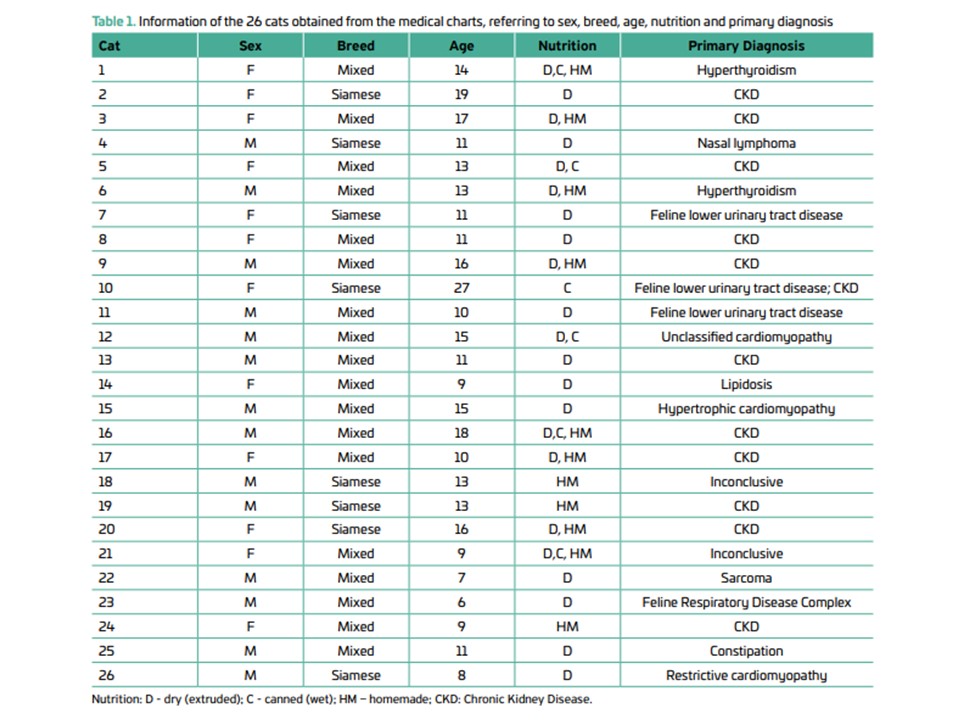Prevalence, clinical and epidemiological features of feline hyperthyroidism at a veterinary teaching hospital in Brazil: a retrospective study
DOI:
https://doi.org/10.21708/avb.2022.16.3.10733Abstract
The hyperthyroidism is the most frequently endocrinopathy in cats. The increasing number of diagnoses over time is due to the greater familiarity with the disease and the development of increasingly sensitive diagnostic tools available. This study aimed to retrospectively evaluate the prevalence, clinical characteristics and risk factors of hyperthyroidism in cats admitted at one of the largest veterinary teaching hospital in Brazil. Between 2002 and 2007, 234 cats were admitted to the veterinary teaching hospital of the University of São Paulo, Brazil. Total thyroxine (T4t) serum concentration was measured from all cats. Also analyzed the medical charts of cats. Of the 234 cats, 26 (11.1%) were considered hyperthyroid (T4t ≥3.8 µg/dL). Of these 26 cats, only two (7.7%) were initially diagnosed as hyperthyroid. The age of cats ranged from 6 to 27 years old (13.1 ± 4.5 years). Twelve patients (46.2%) were female and 14 (53.8%) were male. Eight (30.8%) cats were Siamese, while the others were mixed breed (69.2%). Dry food was the most common food type consumed by cats. There was a high prevalence of hyperthyroid cats with concomitant chronic kidney disease (CKD). This study sheds light on the importance of routinely monitoring feline hyperthyroidism and brings epidemiological and clinical data of this endocrinopathy in cats from one of the largest veterinary teaching hospitals in the country.
Downloads

Downloads
Published
Issue
Section
License
Copyright (c) 2022 Acta Veterinaria Brasilica

This work is licensed under a Creative Commons Attribution 4.0 International License.
Autores que publicam na Acta Veterinaria Brasilica concordam com os seguintes termos: a) Autores mantém os direitos autorais e concedem à revista o direito de primeira publicação, com o trabalho simultaneamente licenciado sob a Licença Creative Commons Attribution que permite o compartilhamento do trabalho com reconhecimento da autoria e publicação inicial nesta revista. b) Autores têm autorização para assumir contratos adicionais separadamente, para distribuição não-exclusiva da versão do trabalho publicada nesta revista (ex.: publicar em repositório institucional ou como capítulo de livro), com reconhecimento de autoria e publicação inicial nesta revista. c) Autores têm permissão e são estimulados a publicar e distribuir seu trabalho online (ex.: em repositórios institucionais ou na sua página pessoal) a qualquer ponto antes ou durante o processo editorial, já que isso pode gerar alterações produtivas, bem como aumentar o impacto e a citação do trabalho publicado (Veja O Efeito do Acesso Livre).


 Esta obra está licenciada com uma Licença
Esta obra está licenciada com uma Licença 